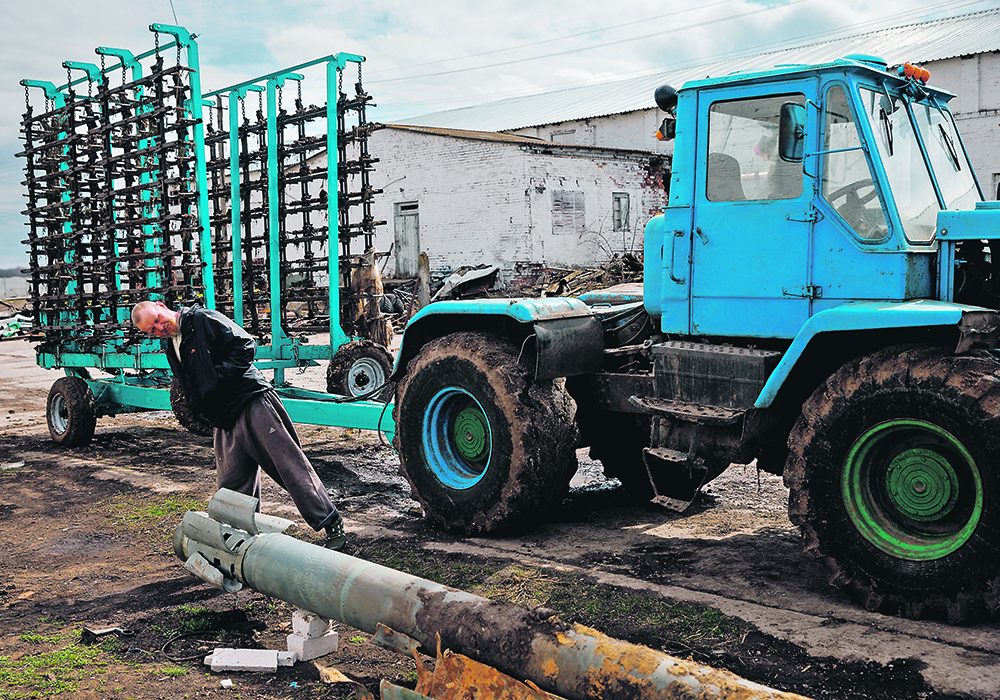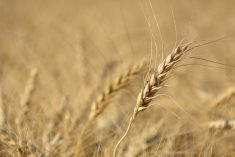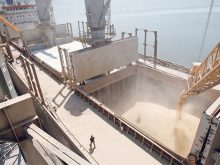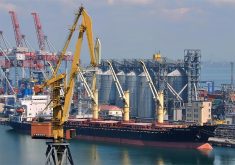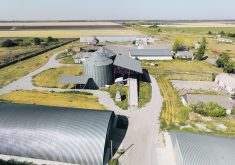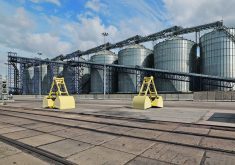Many of Canada’s agricultural journalists have covered the country in the past, giving them a unique understanding now
Farm reporters write about food: crop varieties, nutrients, livestock, the whole array of equipment, markets and war. When war interrupts the normal production and distribution of food, we cover it.
Members of the Canadian Farm Writers Federation have covered all aspects of food production since 1955. Today more than 300 CFWF members cover food production and distribution from coast to coast and around the globe.
When war impacts the global food business, we strive to cover the latest reports from the battle front, the farm and the marketplace.
Read Also

Organic farmers urged to make better use of trade deals
Organic growers should be singing CUSMA’s praises, according to the Canadian Chamber of Commerce.
On April 6, the CFWF organized a one-hour Zoom conference that dug deep into food questions surrounding Russia’s invasion of Ukraine. More than 40 farm reporters from across Canada participated to help shed light on the catastrophe.
- Nicolas Mesly is a freelance reporter based in Quebec, where corn and soybeans are grown primarily for dairy and hog production. Urea from Russia and potash from Belarus are main ingredients in growing the crops.
He reports that 75 percent of these fertilizers were already in hand before the invasion of Ukraine. The remaining 25 percent will likely be set at a very high prices.
Mesly was on an assignment in Ukraine in 2013 before the Crimean invasion and he interviewed the president of the Ukrainian Grain Association.
“He told me that Putin’s plan is to establish a strong international grain cartel. Because 30 percent of the world’s export wheat comes from this area, it would give him control of the world market and price. Ukraine is a big sunflower oil producer. Will that influence the canola oil price in Western Canada?
“When I was there, the story I was following was how Canada helped Ukrainian farmers install big silos along the railway. After the Soviet Union breakup, the oligarchs took lots of the farmland and the farmers were subject to the grain prices from those oligarchs. So, if they had co-ops with silos along the railway, they had better control over the grain prices.
“I have to say we are very concerned about what is going on over there, especially after having been with the people and seeing how they work very hard.”
- Gord Gilmour, editor of the Manitoba Co-operator, has worked with freelance journalist Ihor Pavliuk in Ukraine, 150 kilometres south of Kyiv. He relayed stories of what’s going on with farmers in the area. Pavliuk’s family remains on the farm in eastern Ukraine. A nearby village was flattened by the Russians, but his family remains on the farm to put a crop in the ground.
“In many areas, farmers were helping repair Russian tanks captured by Ukrainian forces, so they can be put back into action fighting for the Ukraine army,” Gilmour says. “Others were canning food for the soldiers and bringing it to the front. Some people were building autoclave steam sterilizing devices in their shops and bringing them to field hospitals.
“One number that is inescapable to us in Manitoba is 15 percent. That’s the proportion of our population who are descended from southern Ukraine. If you’re not Ukrainian, you certainly know people who are. Manitoba farmers identify with Ukraine farmers because we have a similar environment, similar kind of agriculture and we sell into the same global market.
“What’s happening in Ukraine has a big effect on our farmers. We’re looking at big numbers on both sides of the balance sheet this year. Manitoba farmers could potentially make a lot of money depending on what’s happening with the markets. But their input costs are skyrocketing. One farmer told me, “we’re either going to make a lot of money this year, or we’re going to lose a lot of money. But there isn’t much middle ground.”
A long-term grain market analyst told Gilmour he’s never seen a war in which both parties are major wheat exporters. Even when this war comes to an end, it’s going to take a long time to untangle the mess and get things back to some sort of normal.
- Kevin Hursh is a Saskatchewan farmer, consultant and columnist for The Western Producer. He said we can’t overstate the effect of the world’s largest wheat producer invading the world’s fourth largest wheat producer. Global wheat shortages may become larger than we have calculated when we simply deduct the missing Ukraine bushels.
“Some people assume the world might not be badly short of wheat. They think Russian production will be normal, but that’s not necessarily true. As I understand it, most of the large wheat exporting farms in Russia are heavily reliant on imported inputs that may not be available. Even if Russia has open ports that can move grain, how many insurance companies are willing to cover them? Then look at Ukraine’s expected production in 2022. It’s low. That changes the whole dynamic of world markets.
“Most producers in Western Canada have bought their fertilizer and have it in place. The few who don’t may have trouble. Prices are astronomical. We can still get fertilizer, but retailers don’t want to carry high-priced fertilizer, not knowing whether they can sell it this spring. If they hold it over, what if the price drops in a few months? Prices right now are at record high levels and are nearly double what they were last year at this time.
“I tend to think we’re going to have long-term food security issues. With Baltic Sea exports going to Africa and the Middle East, what happens when food is in short supply and prices escalate in Africa and the Middle East? We’ve seen this before. It is not a pretty picture when people can’t get the food they need to survive. I expect this to be a long-lasting conflict with long-lasting impacts.”
- Rachel Telford is the editor of Ontario Grain Farmer magazine. She reports that Ontario farmers have some fertilizer on hand, but they rely heavily on fertilizer imported from Russia. About one-third of Ontario’s required fertilizer is on ships headed toward Canadian ports. But those shipments will be subject to a 35 percent tax.
“Some farmers are reporting paying double and even triple what they paid last year for fertilizer. There may not be enough for in-season application. If farmers cut fertilizer rates, then of course we’ll be looking at reduced yields. Long term, people are looking at supply for 2023 and looking into alternate sources so we don’t have to rely on Russia.”
- Matt McIntosh is a freelance journalist who reports on the European Union. He says that European livestock-exporting countries are running out of feed. Spain, for example, has become a major pork exporter, but it is expected to be out of feed by Easter.
“The food supply problem is forcing governments to examine their (genetically modified organism) policies. France especially has been strictly opposed to GMO feedstocks. Ontario produces great volumes of GMO corn and soy. The situation in Europe has become so dire that open discussions are taking place on how to get shipments of GMO feedstocks into Europe, despite the anti-GMO factor.
“The whole narrative is violently shifting back and forth between pro-GMO and anti-GMO forces.
- Peter Mitham is an editor with B.C. Country Life and a contributor to the Wine Analytics Report in Sonoma. Mitham points out that the invasion came on the heels of COVID-19, supply chain problems, a year of record-breaking high temperatures and drought, plus major floods in British Columbia.
“One potato grower told me that this is going to be an expensive crop to grow. Input costs are higher and are continuing to rise. It’s leaving some farmers questioning how much crop they can afford to grow,” says Mitham.
Referring to his work with Wine Analytics Report, Mitham says significant glass factories in Ukraine have been bombed. This will cut sharply into global supplies. Even if the plants were all still standing, the other impact of the invasion is that glass production is energy intensive. Factories need 1,400 C to 1,600 C for the process to work.
“Basically, what is happening in Europe is exacerbating issues we already have. It may open up some new export opportunities, but that depends on growing conditions here in Canada. Given the weather we’ve had in the last three to five years, I don’t think we can depend on a great year. The producers I’ve talked to all agree they’re glad to be here and not in Ukraine.”


